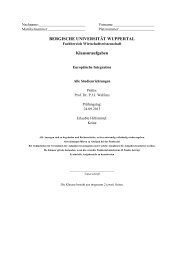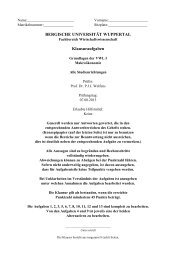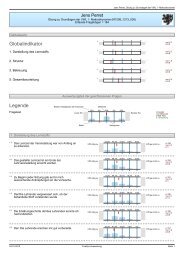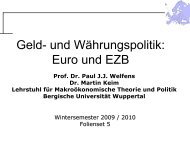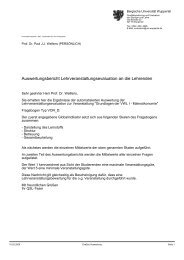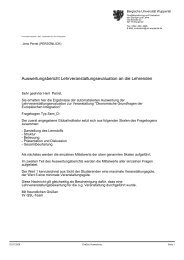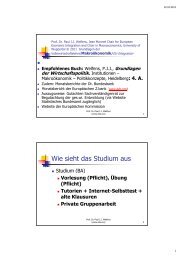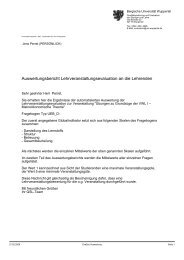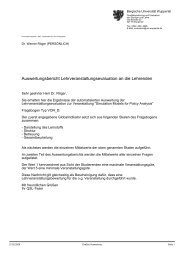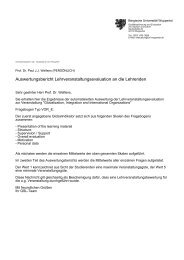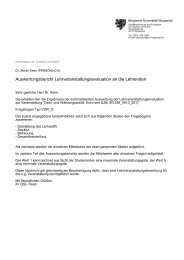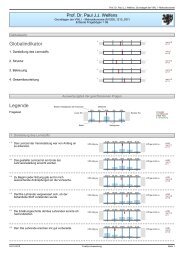UNIVERSITÄT POTSDAM - Prof. Dr. Paul JJ Welfens
UNIVERSITÄT POTSDAM - Prof. Dr. Paul JJ Welfens
UNIVERSITÄT POTSDAM - Prof. Dr. Paul JJ Welfens
Create successful ePaper yourself
Turn your PDF publications into a flip-book with our unique Google optimized e-Paper software.
2. Theoretical Analysis<br />
2.1 ICT Dynamics and Growth<br />
It was not fully clear until 2001 whether high US growth in the 1990s was significantly<br />
related to high productivity growth in information and communication technologies.<br />
GORDON (1999) claimed that the acceleration of US productivity growth in the 1990s<br />
was mainly due to cyclical factors on the one hand, and to high productivity growth in<br />
the production of information technology goods (which would account for the remainder<br />
of accelerated productivity growth) on the other. A skeptical view also comes from<br />
KILEY (2000) who points to high adjustment costs associated with information technology<br />
(IT) investment implying a reduction of productivity growth in a period of high<br />
IT investment. The contrasting view that both production of IT goods and use of IT<br />
contributed considerably to aggregate productivity growth in the 1990s has been particularly<br />
emphasized by JORGENSEN / STIROH (2000), OLINER / SICHEL (2000),<br />
WHELAN (2000a,b), and the COUNCIL OF ECONOMIC ADVISORS (2000, 2001),<br />
all of which provide some empirical evidence for their view.<br />
With different researchers holding opposite views on an important empirical<br />
phenomenon, here the acceleration of productivity growth, the most straightforward<br />
way to clarify the issue is theoretical research on the one hand and more detailed empirical<br />
research on the other hand. As regards theoretical aspects we will subsequently<br />
present some reflections where we will argue that differences in productivity growth in<br />
the US and Euroland / Germany in the 1990s can partly be explained by differentials in<br />
ICT dynamics and the associated direct and indirect growth effects. As regards the empirical<br />
side it seems that three papers have brought clear evidence that both the production<br />
of IT goods and the use of IT were important for the acceleration of productivity<br />
growth in the 1990s. STIROH (2001) has presented an empirical study with industrylevel<br />
data for the US. He shows that most IT-intensive sectors recorded significantly<br />
larger productivity gains than other industries. Using a battery of econometric tests he<br />
shows a strong correlation between IT capital accumulation and labor productivity<br />
where a novel decomposition of aggregate labor productivity is presented. The crucial<br />
conclusion is that virtually all of the aggregate productivity acceleration can be traced<br />
to the industries that either produce IT or use IT rather intensively with hardly any contribution<br />
coming from sectors that are less involved in the IT revolution. STIROH<br />
writes (2001, p.2-3):<br />
“Industry-level data show that the recent U.S. acceleration in productivity is a<br />
broad-based phenomenon that reflects gains in a majority of industries through the late<br />
1990s… For example, the mean productivity acceleration for 61 industries from 1987-<br />
10



